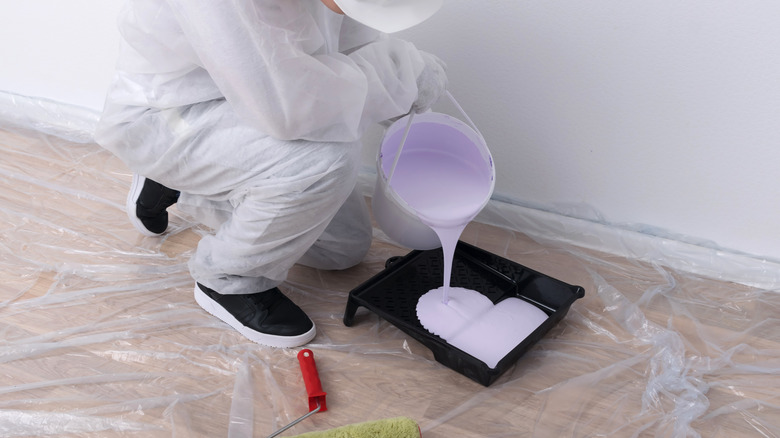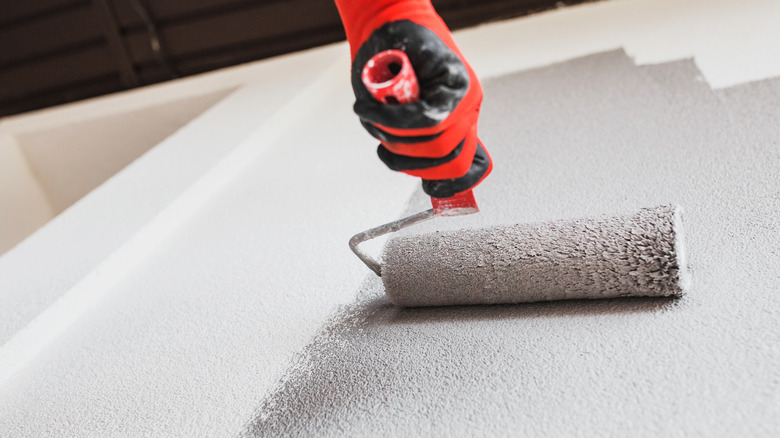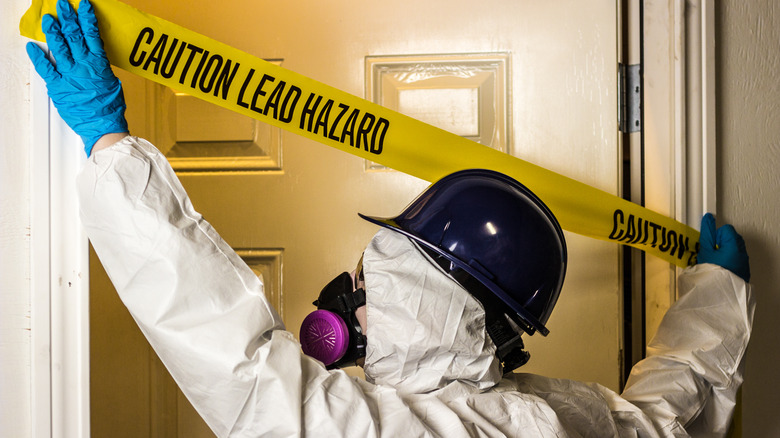The Protective Steps To Take When Painting Over Lead Paint
But before you open that can of colorful magic paint and begin to lather it on your walls, experts indicate prep work is vital to the process. More, there's something important to your family's health to consider, and that's the possible presence of lead-based paint. According to the Environmental Protection Agency (EPA) homes 40 years old or older are likely to have lead-based paint inside and out, and simply put, this stuff is toxic. The less expensive and safest way to protect your family and pets from lead-based paint is encapsulation.
This means applying a polymer to the walls, covering over the old paint, and locking the lead in place. Encapsulation polymers are available at retail stores and are specific to the job. Regular primer, oil, or water-based paint cannot do this job. However, this technique only works on surfaces that have been well-maintained. An encapsulation polymer cannot safely seal deteriorated walls with gaps, gashes, or extreme deterioration.
Dangerous Dust
The U.S. Department of Housing and Urban Development describes how harmful exposure to lead can be. Once absorbed into the body, lead causes damage to vital organs, nerves, and even the brain. As aging paint peels or sheds into dust, a process called chalking, it is much more likely to be ingested. Lead ingestion causes headaches, stomach aches, and nausea. Worse, it can also cause learning difficulties in young children, behavioral problems, and in some cases death.
In many homes, layers of new paint cover up old, lead-based paint, and this offers some protection. However, its presence continues to pose a threat, especially to young children, as areas with a lot of natural wear and tear – windows, doors and frames, stairs, and porches can still leach the poisonous chemical into the house or the soil surrounding the house, notes the EPA.
If you tackle an encapsulation project, take preventive measures to minimize your exposure to lead. The EPA recommends anyone working around this material should wear a hat, disposable coveralls, shoe covers, and an N-100-rated respirator. Additional precautions include using sturdy plastic sheeting and painter's tape to block off the work area. Seal windows and doors to contain the dust, and be careful not to track lead dust from a work area to other areas of the home. After the project, wipe down all surfaces, dust and mop the floor, then throw away all clothing and dusting materials in a sealed bag.
Protect yourself and your family
It's easy to see why taking protective measures when working to cover lead-based paint is vital. There are several ways of spotting lead-based paint inside or outside your house. The EPA recommends getting old paint tested for lead. While home-testing kits are available, both the Consumer Product Safety Commission and the Occupational Safety and Health Administration (OSHA) deem them unreliable. Instead, these agencies suggest hiring a lab to determine if lead-based paint is in or on your home.
If the surface is too deteriorated to paint over with an encapsulation polymer, the other method to deal with lead-based paint is removing it. Avoid sanding the walls because abrasion releases lead dust which can be inhaled. Instead, wet down the old lead-based paint and remove it using a scraper and a vacuum with a HEPA filter.
Even outside containment is key. When working on exteriors, the dust can settle into the soil, gardens, and play areas surrounding the house. Chemical peels that create less dust are also available. The EPA approves of this method as long as the peel does not contain methylene chloride, a chemical banned from paint removers since 2019. Given the dangers of lead dust and the amount of equipment needed to remove it, you might want to consider having a professional contractor remove lead paint from your home.


